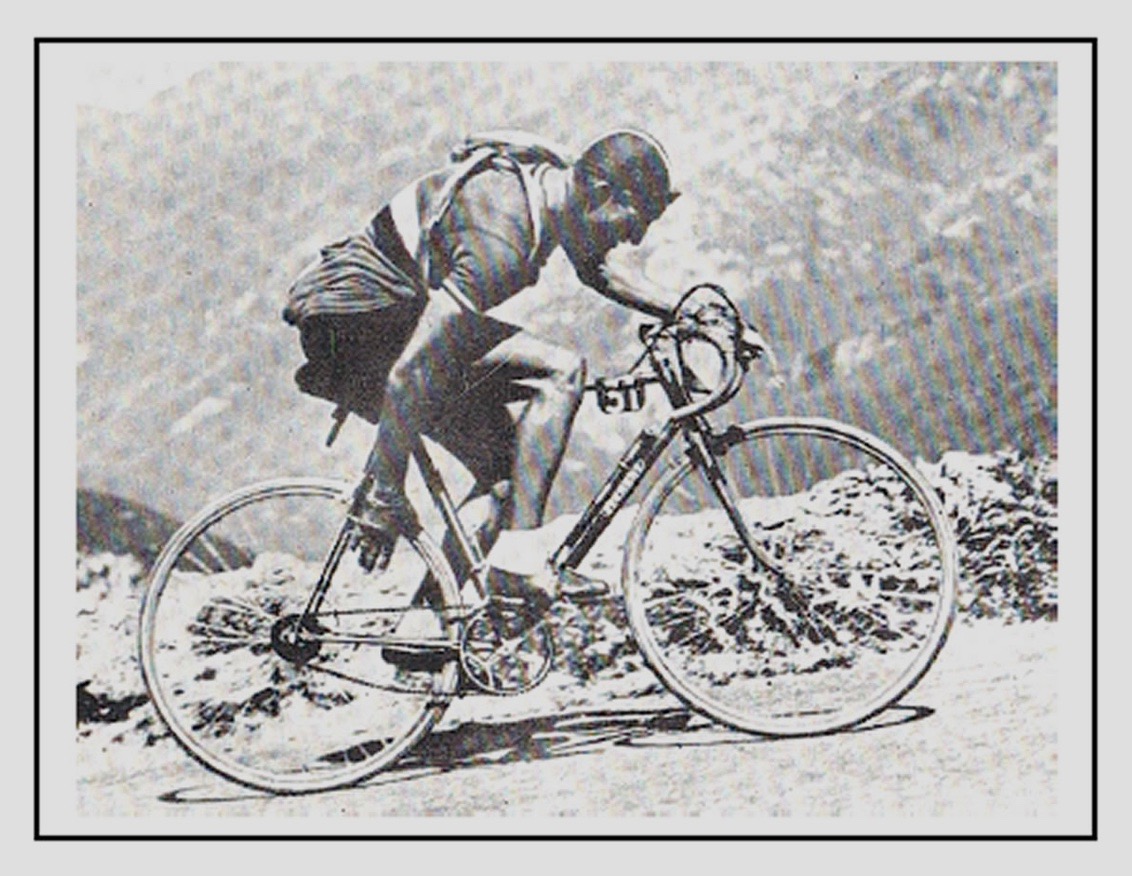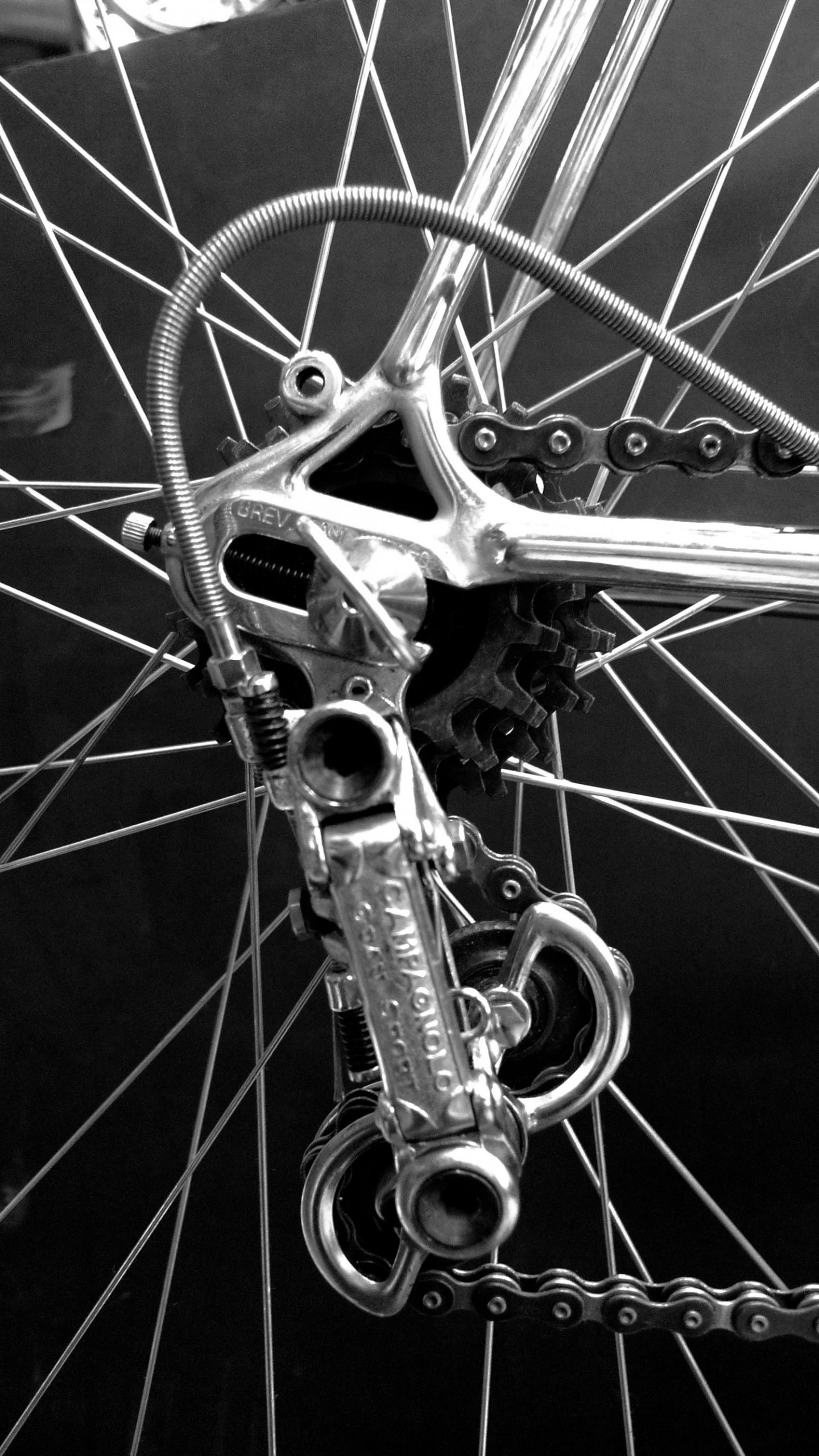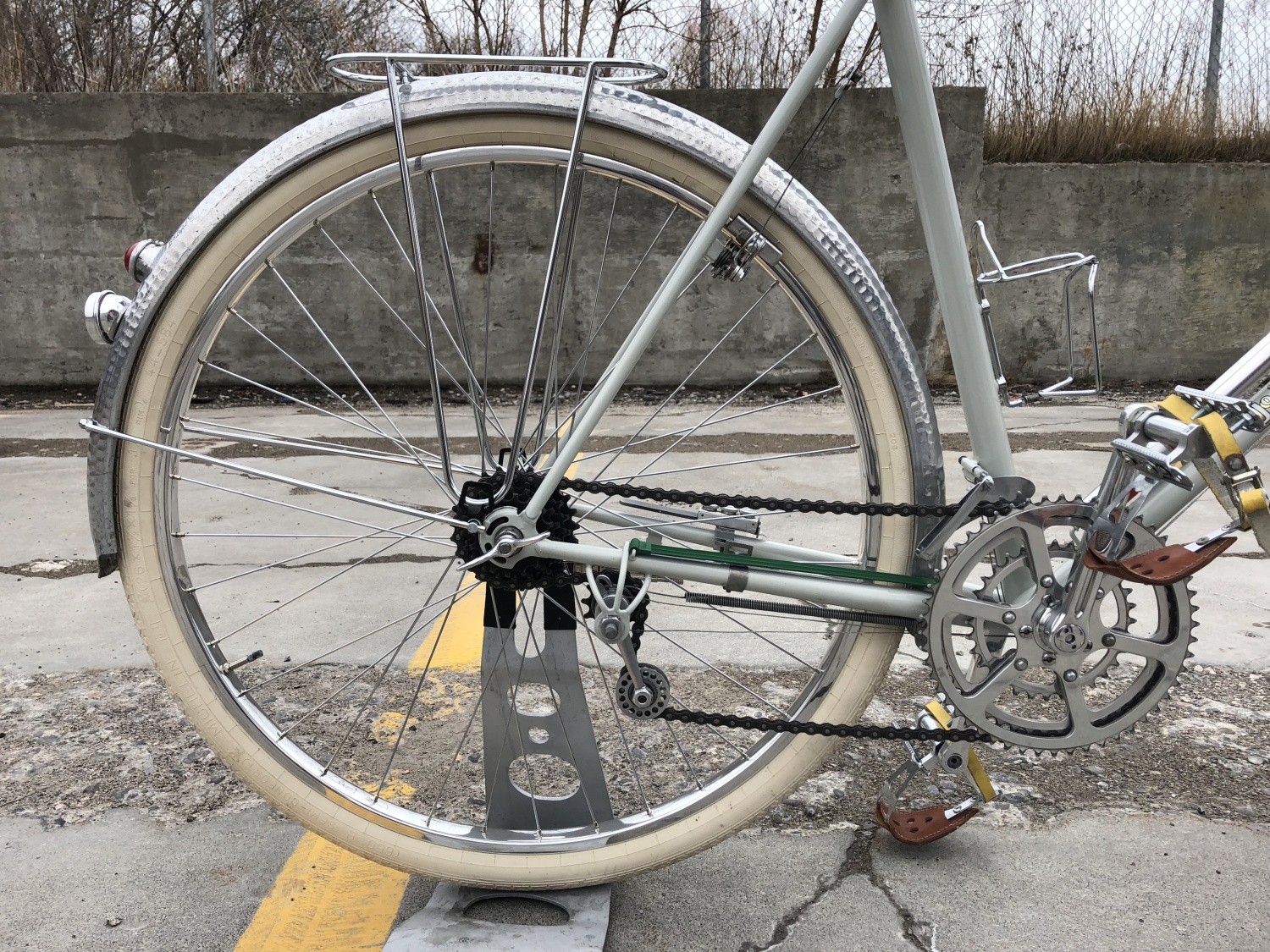
Multiple gears, whether they are the internal hub variety or the derailleur, are the most complex mechanisms on bicycles. An internal hub gear can be interesting enough, but to fully understand it, one has to pull it all apart. A derailleur, on the other hand, is totally exposed and pretty easy to understand. What could be simpler than a mechanism to push the chain laterally to engage a different size sprocket and a spring device to tension the chain? Yet over the years, there have been hundreds of different designs to accomplish his feat.
I became very interested in cycling and bikes and their components at a very young age. Derailleurs have always held a great fascination for me. Soon after becoming the proud owner of a Raleigh Lenton Sports equipped with a Sturmey Archer four-speed hub gear, I began to lust after a derailleur. The SA worked fine, but all the top cyclists of the day rode bikes fitted with derailleurs. I soon saved enough of my paper round money to buy a new rear wheel and used a Simplex Tour de France three-speed mechanism. Although the range of ratios wasn’t close to those offered to me by the Sturmey Archer, I now had a better looking machine.
Back in those days (this was the early 50s), the Simplex Tour de France was by far the most popular derailleur. It worked well over the range of gears used by most racing men: A four- or five-speed freewheel with a maximum range of 14-23, combined with double chain wheels with 47 and 50 teeth. The great cyclist of the time tackled the Alps and Pyrenees with those ratios.
Most of the tour riders were equipped with Simplex, with a few using Huret or Super Champion. In the late ’40s, some of the Italians were still persisting with the Campagnolo Corsa derailleur, a device that required the rider to reach back to two levers mounted on the seat stays, one to release the rear wheel, the other to select the required sprocket. All this was accomplished while back pedaling. The French riders must have thought this hilarious as they were all equipped with gears that were cable-controlled by levers mounted on the down tube.
Gino Bartali changes his Campagnolo Corsa derailleur during the 1948 Tour de France
Fausto Coppi leads Gino Bartali in the 1949 Tour de France. Bartali with a Cervino derailleur and Coppi with a Simplex
Fausto Coppi, the greatest Italian rider, won the 1949 Tour using the French Simplex gears. Even though Simplex had established a factory in Italy, the Italians – particularly Campagnolo – were not pleased. Campagnolo Introduced a new derailleur in 1950 but it still required the rider to reach back to just one lever on the seat stay and to back pedal while changing gears. Coppi used it to win the 1950 Paris-Roubaix, but no one used it in the mountains. It is, however, a beautifully made piece of equipment – classic Campagnolo. I have a few bikes equipped with the Campagnolo Paris-Roubaix, as it became known. They are fun to ride, but I certainly wouldn’t want to race with one, particularly in the mountains. In the ’50s, I used a Bianchi equipped with Paris-Roubaix on early season training rides, much to the consternation of fellow riders.
A 1950 Bianchi with a Campagnolo Paris – Roubaix derailleur.
1953 Campagnolo Gran Sport derailleur with a double pulley, single lower spring
In 1951, Campagnolo introduced the Gran Sport model which was to revolutionize the derailleur industry. Although it wasn’t the first deformable parallelogram mech, every derailleur that came after it used the same principle. The early versions were absolute works of art made from beautifully finished bronze castings. (Most derailleurs before then had been made from sheet metal stampings, and while there were some made from bronze castings – the Super Champion Osgear comes to mind – nothing previously, other than the Campagnolo Paris – Roubaix, had this quality of finish.)
The “Pedaller of Charm”, Hugo Koblet, won the Tour that year using the Gran Sport with handlebar-end levers, the first time these had been seen in competition. Coppi used the same setup to win in 1952. Campagnolo was not established. Although the Gran Sport was three times the price of the Simplex Tour de France, everybody wanted one. I bought mine from Claud Butler’s shop in Clapham in 1953 and I though that it was the bee’s knees. I cannot say that it worked a great deal better than the Simplex, but it sure did look better.
But the Gran Sport struggled to cope with the increasingly popular new chain ring configuration of 52/42. Campagnolo introduced the Record and subsequently the Nuovo Record in an attempt to address the problem, but it didn’t do a great job. Simplex had the upper hand. Its derailleur had always had two sprung pivots which handled the wider range of chain rings much better. Their Delrin Competition model worked better than the Campagnolo Nuovo Record, and their all-alloy SLJ 5500, introduced int he late ’70s, was probably the finest non-indexed derailleur ever made.
However, Simplex did not get the respect it deserved. As far as the racing market was concerned, it made a big mistake using Delrin. Even though its Competition model worked better than the Campagnolo Nuovo Record and was used by several Tour de France winners, it looked similar to the basic Prestige and was not widely accepted.
Now, of course, Simplex has gone, killed off by Shimano. Campagnolo has survived, but only by copying Shimano. There isn’t much of interest in derailleurs these days: Campagnolo, Shimano and SRAM are all very similar. A bit of carbon here, a bit of titanium there, but basically they are all the same design. It was far more interesting in the ’50s when threw was so much choice.
Today’s derailleurs work far better than those produced before Shimano introduced indexing and combined break/shift levers. The latest electric systems work better than anything in the past. But all the improvements have been in the controls, the shape of the sprocket and chain wheel teeth and, in the case of the electric systems, the addition of servo motors. The design of the rear derailleur itself famines essentially the same as the first Shimano Crane, later renamed Dura-Ace, the gear that finished off Simplex and force Campagnolo to change its ways.
Written by Mike Barry Sr. Originally published in Rouleur Magazine.
A Le Cyclo Derailleur on a Jo Routens that we restored in the Bicycle Specialties workshop.
A Jo Routens replica front derailleur made by Michael Barry in the Bicycle Specialties workshop.






Interesting article. BTW, I went through the same changes as Mike Barry Senior. My first real bike was a 1951 green Raleigh Lenton with the SA 4 speed close ratio gear and I rode this until 1955, when my dad splurged on a custom Russ with a Campagnolo Gran Sport derailleur. In the next few years, I had various Huret, Simplex and Campagnolo gears until the mid 1980’s, when I acquired a complete Suntour Superbe group, possibly the best pre-STI stuff ever. I now restore vintage steel bikes and still have the Superbe group, which is now mounted on a Taiwanese steel frame. My present day workhorse is a Naked Bicycle custom e bike with a Shimano STEPs and an 11 speed Alfine hub gear with belt drive, perhaps the ultimate in a low maintenance machine. The evolution of the derailleur still fascinates me and I look forward to the latest developments from Campagnolo, SRAM and Shimano.
Thanks Peter. The Superbe group was lovely. Still one of my favourites.
Coppi was a great Italian rider, but not the greatest.